Amman
Amman
If you’ve never been to the Middle East, Amman (and Jordan as a whole) is your perfect introduction. Not only was Amman a central crossing point of and the birthplace of several great civilizations, but it is also a city that is constantly in development, with a stark contrast between its east and west. Amman is westernized but maintains its Middle Eastern flair, brimming with mouth-watering food and incredibly hospitable people. Particularly remarkable is Amman’s bowl-shaped center, monochrome as far as the eye can see. A city law required all houses to be built in the same light color palette, resulting in a beautiful sandy view best seen from the top of the hill at the Citadel.
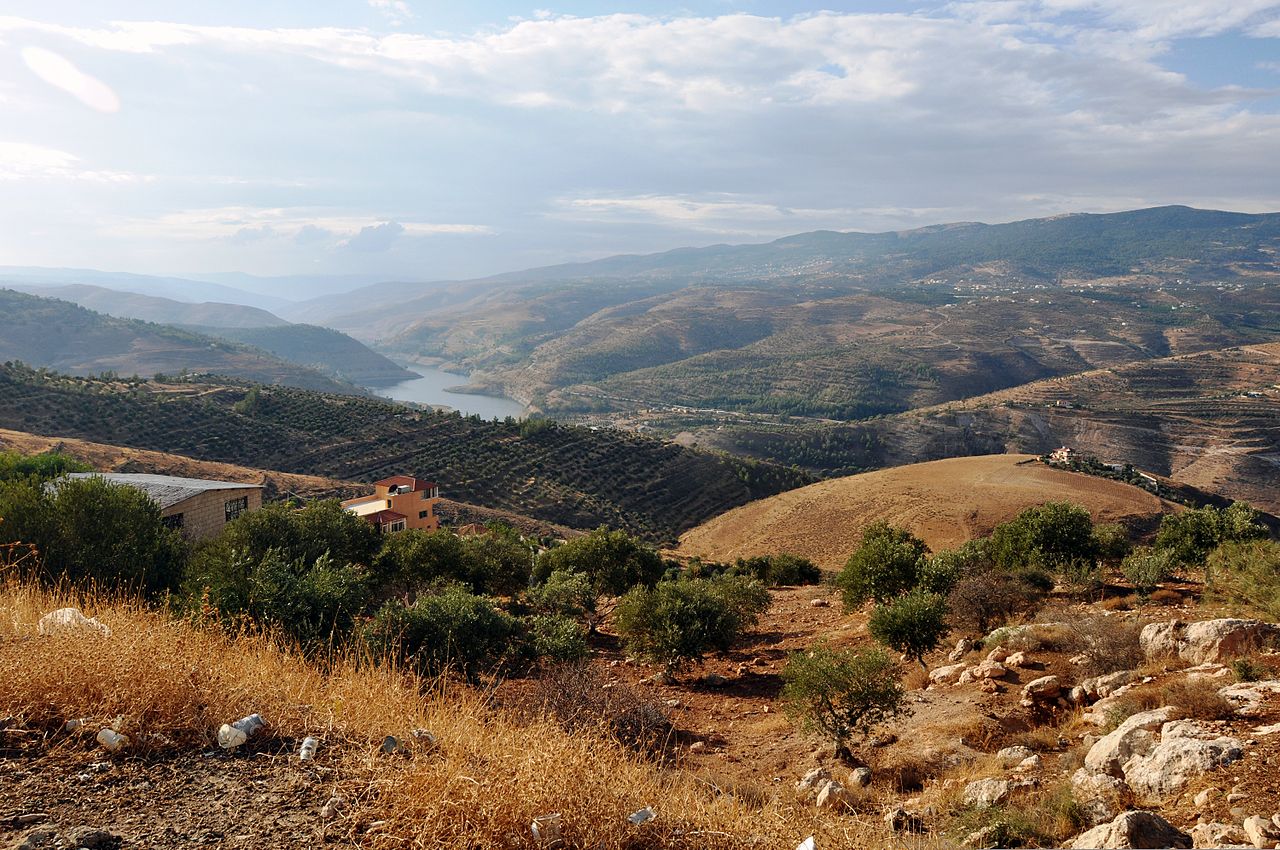
Zarqa River
The river is first mentioned in the Book of Genesis in connection with the meeting of Jacob and Esau, and with the struggle of Jacob with the angel.It was the boundary separating the territory of Reuben and Gad from that of Ammon, the latter being described as lying along the Jabbok. The territory of Sihon is described as extending “from Arnon unto Jabbok” (Numbers 21:24), and it was reclaimed later by the King of Ammon. Eusebius places the river between Gerasa and Philadelphia.
Roman Theatre
This magnificently restored theatre is the most obvious and impressive remnant of Roman Philadelphia, and is the highlight of Amman for most foreign visitors. The theatre itself is cut into the northern side of a hill, and has a seating capacity of 6000. The best time for photographs is the morning, when the light is soft – although the views from the top tiers just before sunset are also superb.
The theatre was probably built in the 2nd century AD during the reign of Antoninus Pius (AD 138–61). It was built on three tiers: the rulers, of course, sat closest to the action, the military secured the middle section, and the general public perched and squinted from the top rows. Theatres often had religious significance, and the small shrine above the top row of seats once housed a statue of the goddess Athena (now in the Jordan Museum), who was prominent in the religious life of the city.
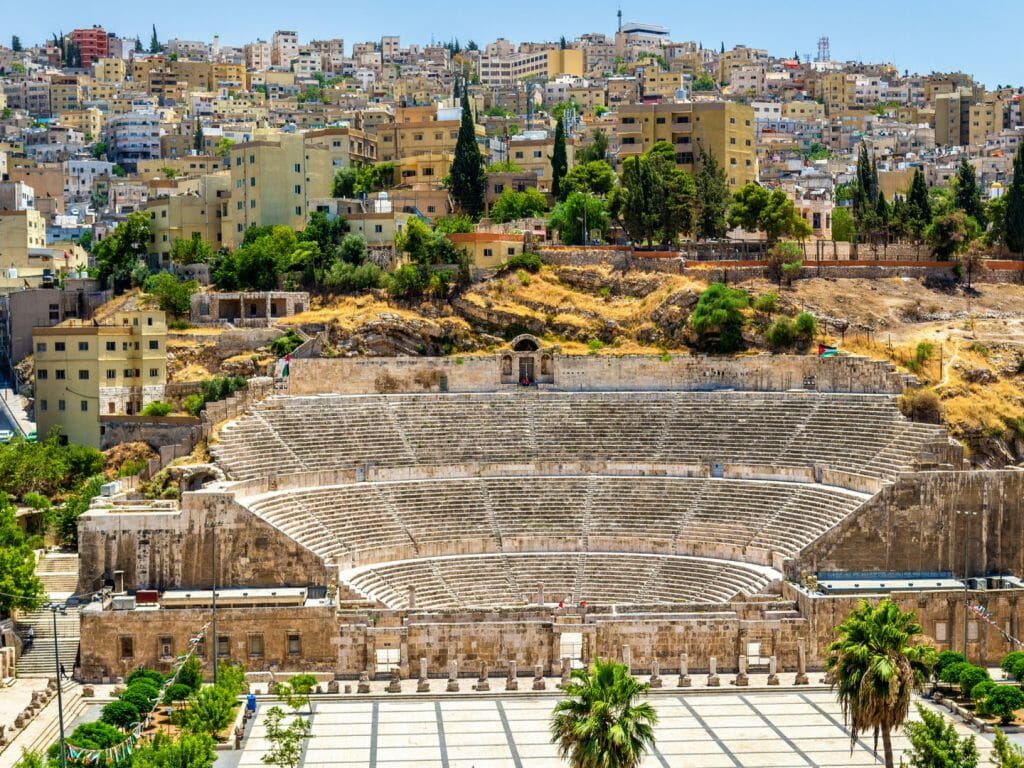
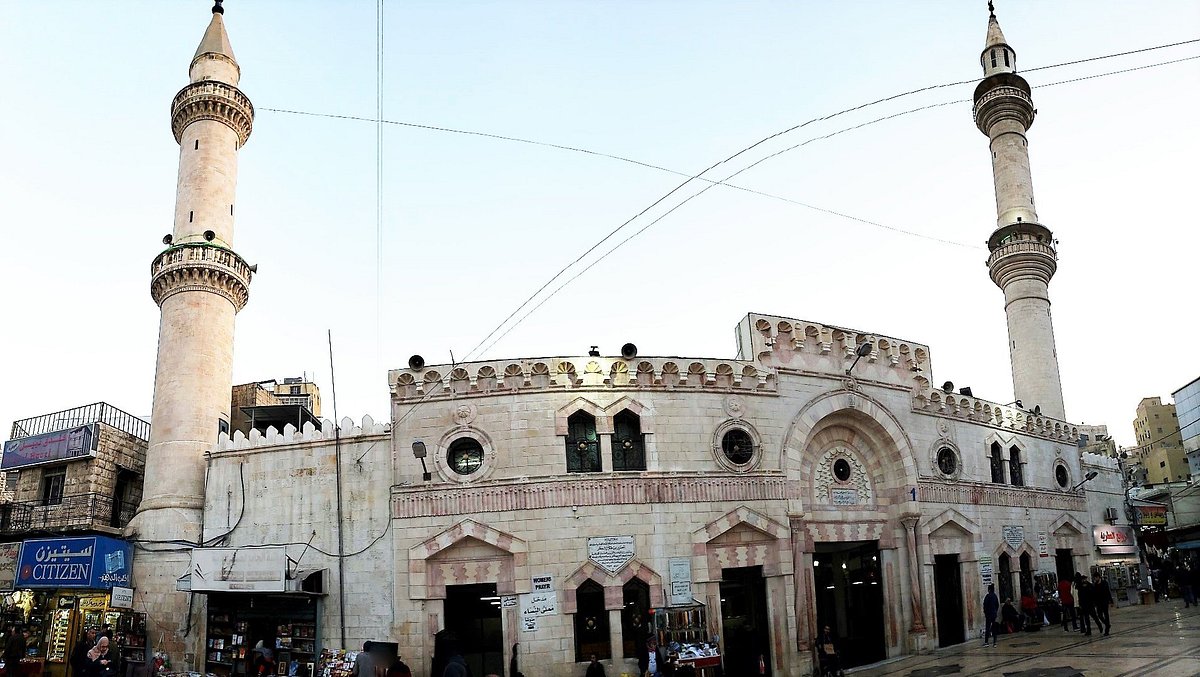
Grand Husseini Mosque
One of the oldest mosques in Amman, rebuilt by King Abdullah I in 1932 on the site of the one built by the second Caliph, Omar Bin Al-Khattab around 640 AD. Tourists may be able to enter if dressed appropriately.
To see the mosque in full swing, follow the throngs of worshipers to the mosque when it’s time for Duhr (noon) prayer or Friday prayer. While here, visit the nearby souks to buy spices, fruits and nuts or indulge in sweet baklava and kanafeh.
The Citadel
Towering above the capital city of Amman on a hill is the Amman Citadel. This historic site comprises a 1700 meter wall that dates back to the Bronze Age, the iconic Temple of Hercules, and the Umayyad Palace. With so many significant landmarks located one site, the Amman Citadel is arguably one of the best places to visit in Amman.
The city of Amman was originally known as Rabbath Ammon which translated as the royal ancient city of the Ammonites. The Ammonites were those who lived in the kingdom during the Iron Age. The area of the citadel dates back as far as the Bronze Age. It was during this period that it was fortified (around 1800 BCE). Since then the site has undergone many rebuilds and additional constructions during the Iron Age, Roman, Byzantine and Umayyad eras.
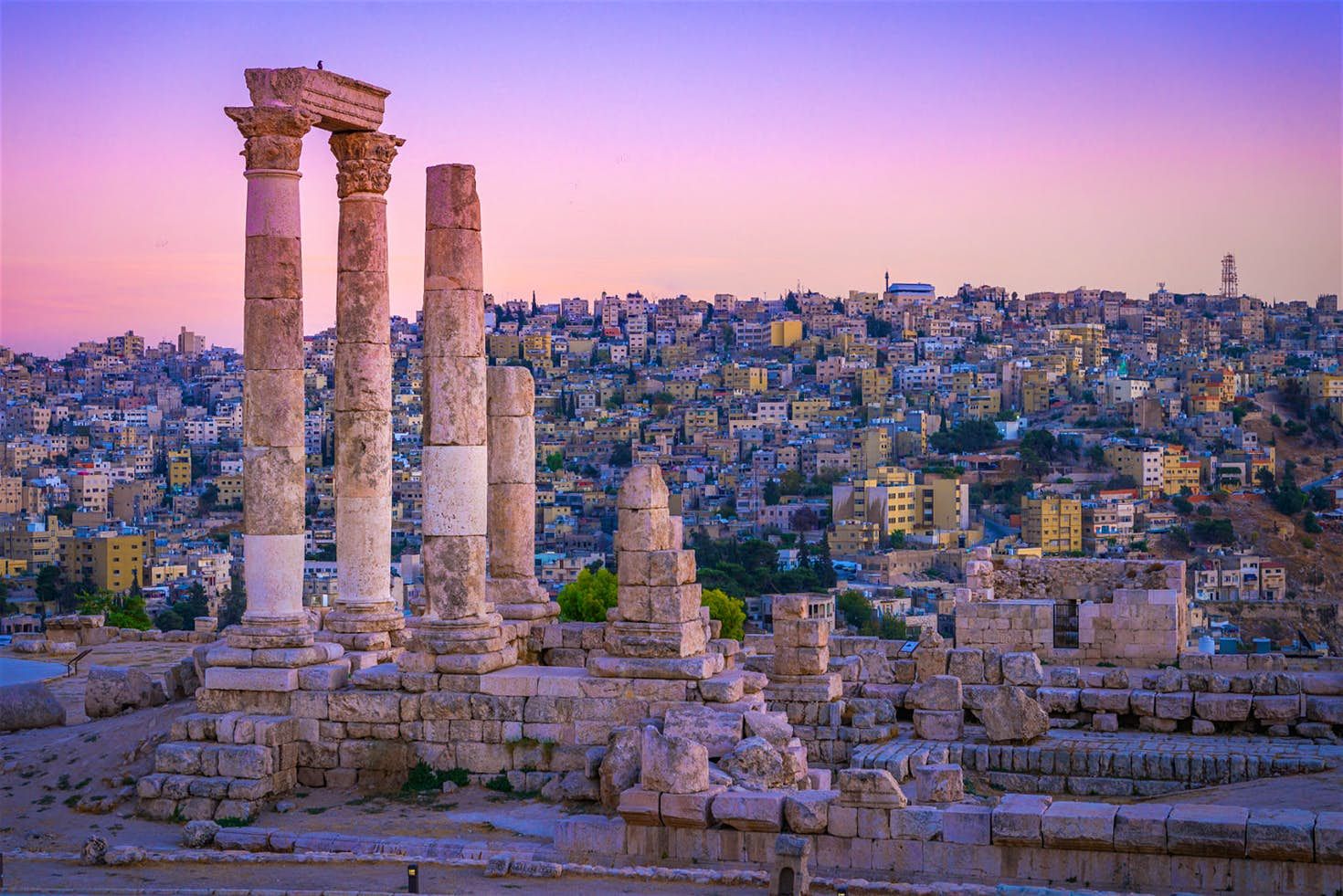

The Jordan Museum
The Jordan Museum is located in the dynamic new downtown area of Ras al-‘Ayn. Presenting the history and cultural heritage of Jordan in a series of beautifully designed galleries, The Jordan Museum serves as a comprehensive national center for learning and knowledge that reflects Jordan’s history and culture, and presents in an engaging yet educational way the Kingdom’s historic, antique and heritage property as part of the ongoing story of Jordan’s past, present, and future.
Royal Automobile Museum
The Royal Automobile Museum was founded in 2003 under the patronage of His Majesty King Abdullah II. The Royal Automobile Museum showcases an important part of Jordan’s political history from an interesting perspective. The exhibits also reflect the history of the Hashemite Kingdom of Jordan through cars from the reign of King Abdullah I to the reign of King Abdullah II. More recently, it has included many non-Jordanian vehicles and bikes, such as a 19th-century bike, a Bugatti and other rare vehicles. One of the most important items of the museum is the Lincoln Cabri convertible, 1952 model, which was used by late King Hussein Bin Talal during his studies in England, and also during his crowning ceremony in May 1953.
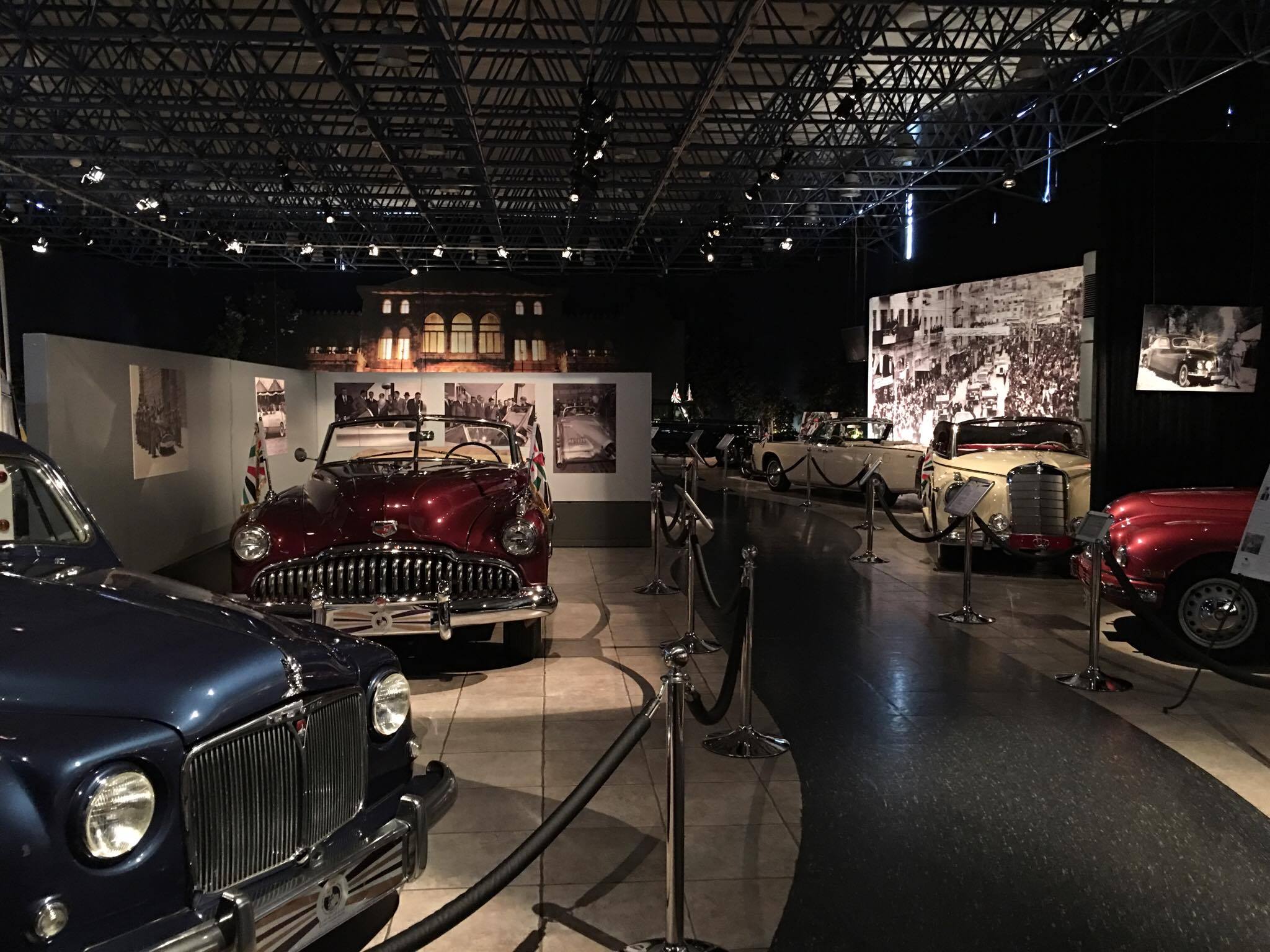
Best Places in Amman Photo Gallery
Amman Jordan Citadel
Temple of Hercules at Amman Citadel in Amman, Jordan.
Royal Automobile Museum
Zarqa River
Roman Theatre
Grand Husseini Mosque
Amman Jordan Citadel
Roman Theatre
Amman From Plane
Abdoun
Roman Theatre
The Jordan Museum
Amman
King Abdullah 2 Mosque
Grand Husseini Mosque
Amman From Plane
Amman Jordan Citadel
Temple of Hercules at Amman Citadel in Amman, Jordan.
Roman Theatre
the older side of downtown Amman (wast el balad) capital of Jordan..Jordan Images..
Roman Theatre
Amman From Plane
Amman Jordan Citadel
Abdoun
Abdali